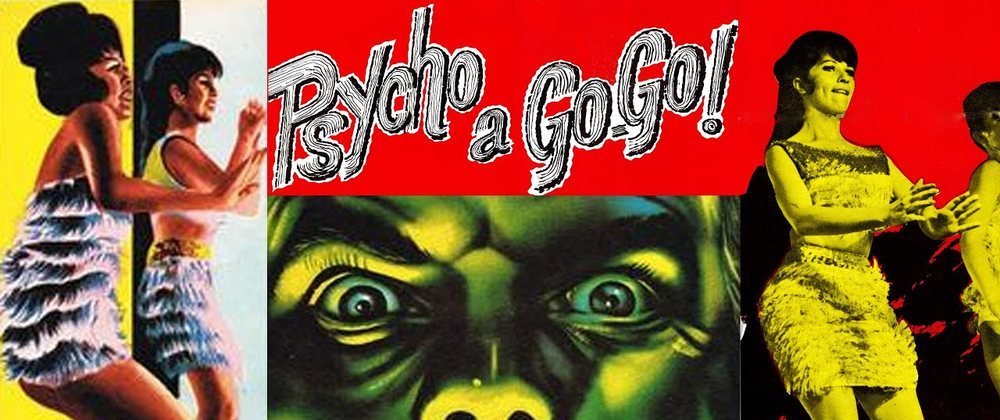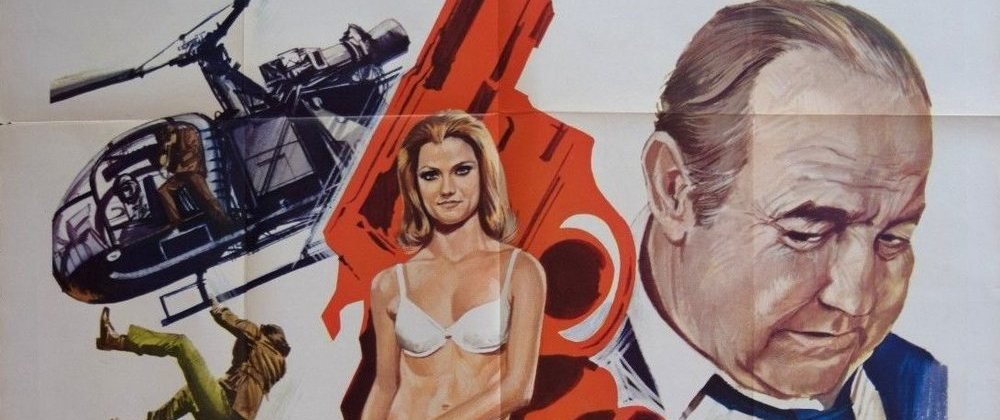ADAMSONMANIA! Part 1: Beginnings (And Their Mutations)
The event of the summer for exploitation film collectorsis Al Adamson: The MasterpieceCollection, a jaw-dropping 14-disc set from Severin Films that includes awhopping 32 films. Making one's way through such a massive collection ofmaterial can be daunting so Schlockmania has taken the plunge on the viewer'sbehalf, breaking it down into categories oriented around particular themes.This first installment looks at Adamson's development as a filmmaker, includingthe habit he developed of cannibalizing his own work to create "new"films. Note: background info for this post series comes from The Flesh And Blood Files, theexcellent liner notes booklet by Bill Ackerman & Amanda Reyes that isincluded in the box set.

Half Way To Hell: Adamson made his first foray into direction with his uncredited work on this film, a shoestring cowboy flick that was started by his father, Victor Adamson (a.k.a. early Hollywood cowboy star/director "Denver Dixon"). He also plays a black-hatted baddie in the film. The plot revolves around a young bride-to-be trying to escape from Mexico, her revolutionary leader fiancé and an American prospector who gets caught in the middle. Adamson's work plays by the rules of B&W poverty row westerns but you can see elements of what would become his style start to emerge here: episodic plots that rely on an ensemble cast, a use of the great outdoors to provide cheap production value, a chase/scuffle-driven finale that leans heavily on those locales, narration to patch together disparate subplots and a use of canned music. The result is ragged, even by cowboy cheapie standards, but gets to the end credits on determination alone.
Psycho A Go Go: This is the first proper directing gig for Adamson, a movie that starts as a heist flick and mutates into a chase movie with psycho thriller elements. At the encouragement of a prospective distributor, some go-go dancing scenes were also added. If that's not enough, the film also doubles as a vehicle for singer Tacey Robbins, who was being managed by Adamson at the time (he also ran a nightclub where she appeared!). This is the first inkling of the patchwork approach to filmmaking that Adamson would become known for, with the mood and genre shifting from scene to scene as it tries to be multiple things for multiple audiences. It was shot in 1964 so it's pretty clean-cut and sleaze-free despite a modest body count. Thankfully, it's got excellent scope lensing by a young Vilmos Zsigmond, some charming part-rock/part-lounge tunes, a strong opening heist sequence and a reasonably tense chase finale. The midsection gets gabby, a common issue with Adamson's films, but you can see the movement towards a drive-in aesthetic.

The Fiend With The Electronic Brain: During his career, Adamson would become famous for reworking his own completed films and the work of others, dropping entire subplots and crafting new ones on the fly to reshape films for the whims of the commercial marketplace. This is the earliest example, reshaping Psycho A Go Go after a distributor' suggested making it more of a horror film. The majority of the original film was left untouched but a new three-scene subplot was added to explain that Psycho A Go Go's psycho henchman (Roy Morton) became homicidal due to experimental surgery designed to save his brain after a traumatic war injury. The new scenes add John Carradine, making his first of seven Adamson film appearances, as the regretful doctor who performed the operation. Morton returns for the final new scene, adding an entertainingly ludicrous payoff for the new subplot. The result got a little bit of theatrical play but would have to wait a few years for its real potential to be tapped...
Blood Of Ghastly Horror: by 1971, Adamson was in full swing as an exploitation film specialist, working with creative partner Sam Sherman at their own outfit, Independent-International Pictures. The two decided to take one more kick at the can with Psycho A Go Go/Fiend With The Electronic Brain - and the result was perhaps the most feverish of their patchwork efforts, Blood Of Ghastly Horror. It dramatically pares down the Psycho material while retaining the scenes shot for the Fiend version and adds an entirely new framing plot in which the death of the titular maniac from Psycho is being avenged by someone with supernatural skills. It also adds a Frankenstein-like homicidal zombie as well as new cast members Tommy Kirk, Kent Taylor and Regina Carrol (Mrs. Al Adamson). The meatloaf of a plot confuses and stuns in equal measure with its car-crash of plotlines but it's never dull and piles on the mayhem (five people killed in the first three minutes!). To watch it is to witness Adamson's evolution from earnest young filmmaker to exploitation-savvy hustler in just 90 minutes.

Smashing The Crime Syndicate: Adamson's third feature film was another venture into making a drive-in variant of a mainstream film: in this case, a spy film about a James Bond-ish undercover agent trying to infiltrate a counterfeit money operation designed to raise funds for a resurgence of the Nazi party. Like the original cut of Psycho A Go Go, it soft-pedals the sleaze and violence in hopes of reaching a more upscale audience. It boasts nice photography from a young Laszlo Kovacs, the first of many great animated titles sequences for Adamson films by Bob LeBar and a fun cast of old-timers including Broderick Crawford as well as Adamson regulars John Carradine and Scott Brady. It would be consigned to the shelf for many years due to financial issues stemming from a producer with questionable practices, mob debts and a suicide (see the Adamson documentary Flesh & Blood for more info) but ultimately made it to t.v. in the mid-70s. That was a suitable fate as it often feels like the cheaper, 'lite' t.v. movie version of a Bond or Matt Helm spy flick. Adamson would later revisit this title for one of his remixes with Sherman but that's a tale for another installment of Adamsonmania...


